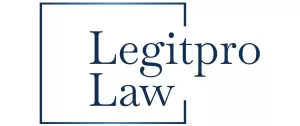- within Intellectual Property topic(s)
- in United States
- with readers working within the Automotive, Utilities and Law Firm industries
- within Intellectual Property, Energy and Natural Resources and Finance and Banking topic(s)
- with Senior Company Executives, HR and Finance and Tax Executives
Introduction
In today's time, where social media and the internet have taken over forms of communication, the line between inspiration and plagiarism is becoming very thin. Content creators such as YouTubers, Instagram influencers, teachers, podcasters, and even meme creators use existing content like movies, songs, literature, or paintings as a source of material to create something new. Reviews, reaction videos, parodies, educational lectures, and satirical sketches tend to rely on clips of copyrighted content in order to get their point across and be entertaining. But is this reliance a valid one from a legal standpoint? Does it push the limits too far towards copyright infringement? Over time, the exceptions have been interpreted by courts to balance copyright owners' rights with teachers', artists', and digital creators' needs, so they can have room for innovation and free expression. To know the scope of fair dealing is not only about complying with the law for today's creators, but it is also a practical requirement one that can protect their content, facilitate creativity, and minimize the risk of takedown or lawsuits.
Legal Framework of Fair Use in India
Section 52 of the Copyright Act, 19571 expressly identifies situations where the use of copyrighted works does not constitute infringement. These include private or personal use, research, criticism, or review, reporting current events, reproduction for educational purposes, and instances of parody, satire, or incidental use. For instance, quoting passages from a book in research, using short film clips for critique, or reproducing diagrams for classroom teaching can all fall within fair dealing.
Unlike the U.S. model, which is open-ended and determined by broad factors, India's fair dealing framework is restrictive and purpose-specific. However, courts have read these exceptions liberally in the interest of public good, thereby ensuring that the law evolves with new forms of creativity and expression.
Practical Implications for Content Creators
For the creators of today's digital world, the principle of fair dealing in Indian copyright law is not just a legal protection; it is a workable principle that facilitates innovation and creativity while respecting intellectual property. With a world where YouTube reviews, Instagram reels, educational webinars, and comedy sketches rule the digital world, knowing how fair dealing works in relation to day-to-day content can avoid unnecessary copyright conflicts and encourage creativity.
- For Reviews and Commentary
Use: One of the most popular uses of fair dealing is for purposes of reviews and comment. Film critics, music reviewers, or tech vloggers can use short clips or excerpts of films, songs, or product demos to illustrate their points, highlight specific creative features, or support their critique. This allows them to demonstrate the quality, context, or technical aspects of the original work directly to their audience, making reviews more authentic and credible.
Suggestion: Ensure the portion used is proportionate and relevant. Avoid overuse or content that replaces the original work. For instance, if a reviewer plays a long segment of a film without adding commentary, it may be seen as competing with the original rather than critiquing it. The safer approach is to keep excerpts short, link them directly to your observations, and ensure your use adds new perspective rather than simply repeating the original material.
- Educational Content
Use: Teachers developing online lectures, researchers developing academic presentations, or students producing project videos are within their rights to use copyrighted content for purposes of teaching.
Suggestion: Keep it restricted strictly to educational purposes only. Sharing the same lecture or project video on a monetized entertainment channel, or using it in a way that suggests commercial exploitation, could cross into infringement. To stay compliant, creators should limit such uses to classrooms, academic platforms, or learning-focused forums and avoid blending them with income-generating or promotional content.
- Satire and Parody
Use: The domain of satire and parody also finds protection, opening space for satirists, comedians, and meme creators to thrive on the internet. Indian courts have upheld parody as a transformative use putting new expression, meaning, or message into the original work.
Suggestion: The use must be transformative not just a copy of the original for entertainment value. Transformative use means adding new insights, humor, or critical perspective so that the audience experiences a fresh message or meaning. For example, parody that twists a song's lyrics to comment on politics or a meme that reframes a film dialogue to highlight social issues qualifies, whereas replaying the same clip for laughs without new input does not.
- Music and Background Tracks
Use: Application of music and background tracks. Merely playing or streaming a complete song, even as background to a video, is not likely to amount to fair dealing unless it is of a transformative kind. But reaction videos, mashups involving critique, or where music is used incidentally to add to comment would be within what is acceptable use. Content creators need to be careful here, for music right holders tend to quickly send takedown notices or claims, particularly on monetized videos.
Suggestion: Playing an entire track in the background, even unintentionally, risks takedowns or copyright claims. Platforms often deploy automated detection systems that flag such uses quickly, even if the creator's intent was not commercial. To reduce risk, stick to short, clearly relevant snippets, integrate them with your commentary, or choose royalty-free/ licensed music. This not only ensures legal compliance but also protects monetization and prevents content removal.
Platforms such as Instagram or YouTube frequently incorporate automated copyright detection mechanisms that flag full-length copyrighted music or videos, even when being used for fair purposes. Creators are therefore cautioned to use short snippets of content minimally, integrate them within their own commentary, and where feasible, use licensed or open-source content. This not only minimizes legal threats but also facilitates easier monetization of content.
As applied, fair dealing is then a balancing mechanism it enables creators to innovate, learn, and entertain, but requires accountability in the incorporation of copyrighted material. Through proportionate use of material, transformation, and non-market substitution of the original work, content producers in India can maximize their freedom of creativity while staying within the limits of the law.
Judicial Interpretation
Indian courts have significantly shaped the contours of fair dealing by balancing the rights of copyright holders with the interests of society and creators. In Super Cassettes Industries Ltd. v. Hamar Television Network 2, the Delhi High Court emphasized that when copyrighted music is used in television shows, the purpose, nature, and amount of use must be carefully examined to determine whether it qualifies as fair dealing.
Further, in Academy of General Education v. B. Malini Mallya3, the Karnataka High Court underlined that the key test lies in whether the use competes with or substitutes the original work in the marketplace. Together, these judgments illustrate that Indian courts lean towards protecting transformative, non-commercial, and educational uses, while drawing a clear line against exploitation that undermines the original creator's rights.
Phonographic Performance Ltd. v. Lookpart Exhibitions & Events Pvt. Ltd.4, the Delhi High Court examined whether the unauthorized public performance of copyrighted sound recordings at events infringed the rights of copyright owners. The Court reaffirmed that copyright in sound recordings includes the exclusive right to communicate the work to the public, and any unlicensed commercial performance amounts to infringement. Importantly, the Court also noted that exceptions under Section 52 of the Copyright Act, 1957[5], such as private use or educational purposes, do not extend to large-scale public events or exhibitions. This ruling highlights the limits of fair dealing, emphasizing that while individual creators may rely on exceptions for criticism, education, or parody, commercial entities using music in public spaces must obtain proper licenses.
Similarly, in Ustad Faiyaz Wasifuddin Dagar v. A.R. Rahman & Ors.6 the Delhi High Court dealt with a dispute over the alleged copyright infringement of the Dhrupad composition "Shiva Stuti," originally created by the Junior Dagar Brothers in the 1970s. At its core, the case highlighted the tension between rewarding originality and preventing monopolization of traditional art forms. The judgment underscores the difficulty of claiming exclusive rights over works rooted in traditional or communal heritage and illustrates the fine line between inspiration, adaptation, and infringement in India's copyright regime.
Limitations and Challenges
Although fair dealing under Indian copyright law is a helpful protection to creators of content, it is not a blanket protection. The scope of the permissible use is still subject to several constraints, generating uncertainty and practical barriers for digital creators.
- The Copyright Act, 1957 does not specify any quantitative limits on how much of a song, poem, or book can be copied under fair dealing. Instead, courts decide case by case, relying on proportionality and reasonableness. This lack of clear standards creates uncertainty for creators using a short clip for critique may be fine, but a longer portion could be infringement. As a result, many creators hesitate to experiment freely.
- The second limitation comes in the form of commercial use and monetization. Although the law allows for criticism, review, or parody, monetized content that draws advertisements, sponsorships, or paid subscriptions is more subject to scrutiny by copyright holders. The pivotal issue becomes whether the use of the copyrighted material substitutes or replaces the original in the market.
- In practice, platform policies and automated copyright systems create a major hurdle. Even when a creator's use qualifies as fair dealing under Indian law, platforms like YouTube or Instagram often flag content through automated systems that ignore context or transformative use. This leads to takedowns, demonetization, or strikes, with appeals being slow and uncertain. Since platform rules differ from Indian copyright law, creators face a practical imbalance, legal protections exist in theory, but algorithms still restrict their work.
Conclusion
To remain within the bounds of fair dealing, creators need to make sure that their appropriation of copyrighted work is of a transformative kind, appropriate in relation to the purpose, and does not serve as a replacement of the original work. On a practical level, this is that creators must include meaningful commentary or critique in using excerpts, limit themselves to what is necessary for the intended purpose, and refrain from copying the most crucial or identifying part of a work without compelling justification. With India's creator economy growing, it is imperative that the knowledge of such principles does not only assist content creators to protect themselves against legal challenges but also enable them to innovate with confidence while honouring the rights of original authors.
Footnotes
1 Section 52, The Copyright Act, 1957
2 2011 (47) PTC 49 (Del).
3 2009 (39) PTC 393 (Kar)
4 2024 SCC OnLine Del 3664
5 Section 52, The Copyright Act, 1957
6 2025 SCC OnLine Del 2666
The content of this article is intended to provide a general guide to the subject matter. Specialist advice should be sought about your specific circumstances.


